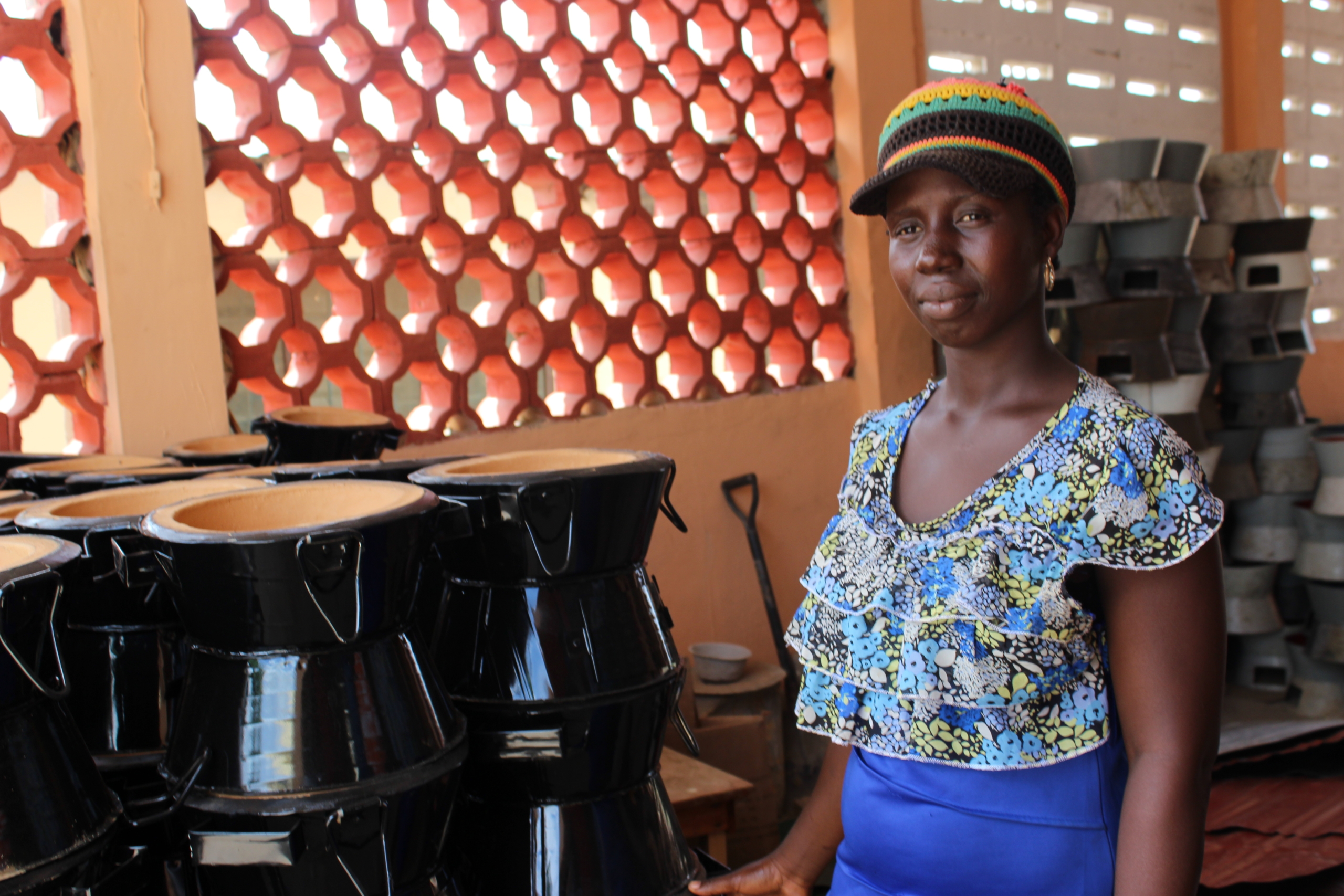Carbon neutral
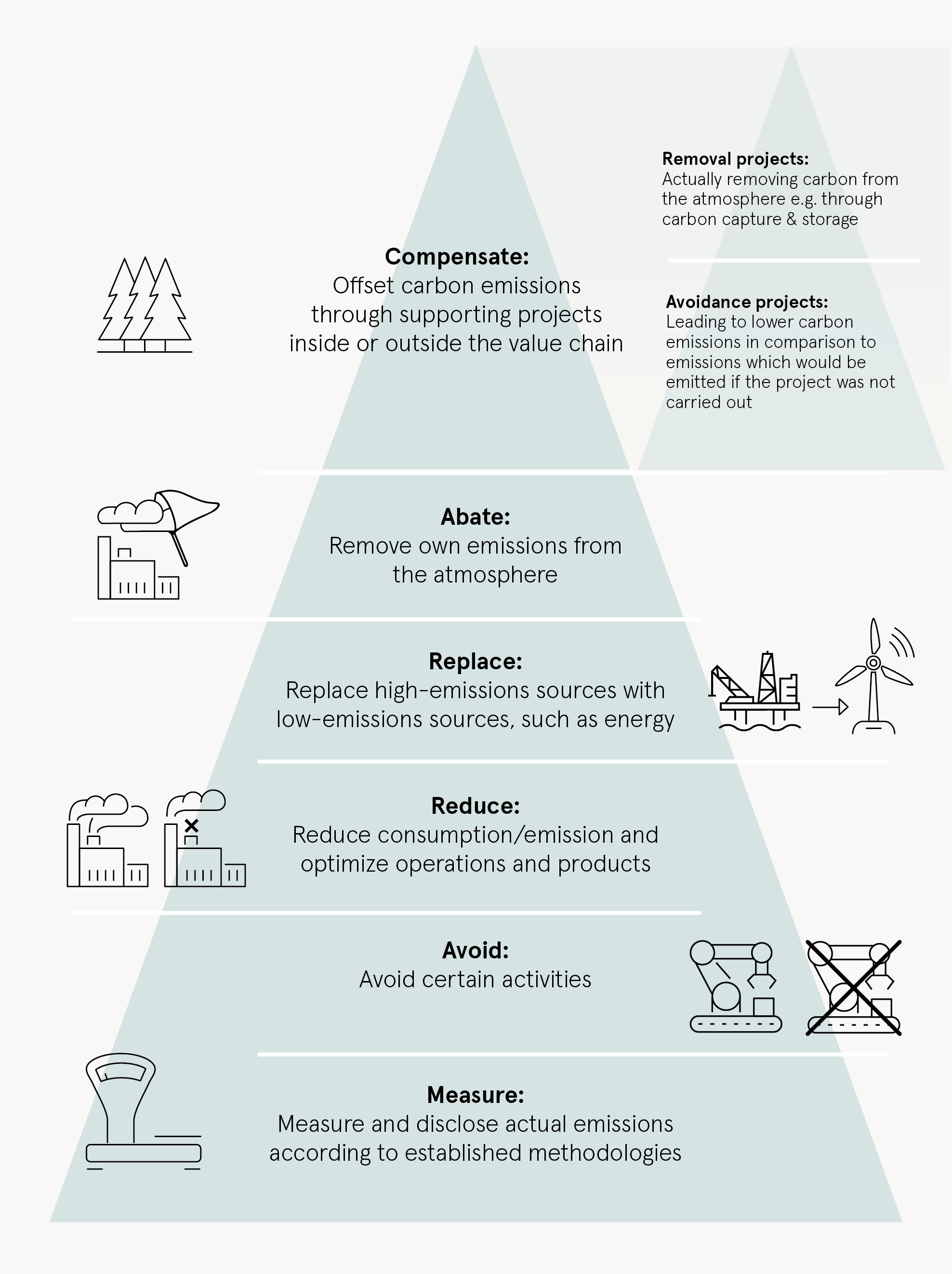
Emission mitigation hierarchy
While urgent actions are needed to reduce emissions within companies’ own value chains, there is both a need and a potential to help mitigate climate change within a shorter timeframe through supporting projects with documented emission reduction benefits, outside companies’ value chains (beyond value chain mitigation).
Carbon neutrality entails more than merely compensating for emissions through monetary offsetting. Strict standards ensure companies work consistently towards emission reductions before being allowed to purchase carbon credits. Elopak follows the approach of an emission reduction hierarchy. First, we measure and publicly report all emissions. Then, we work systematically to reduce emissions through various initiatives and with specific targets. Lastly, we compensate remaining emissions through supporting projects outside our own value chain through the voluntary carbon credit market.
Elopak works only with credible carbon credit providers who are project developers and not merely traders. Compliance is critical in this work and our partners, as well as our projects, are third party verified according to the strictest standards. We choose projects which are relevant to us (either by nature or by location) and which have multiple benefits, meaning they contribute to reduced greenhouse gas emissions as well as improved livelihoods, health and social benefits.
Since 2016, Elopak has offset all emissions from our manufacturing processes, transport, and business travels (Scope 1, 2, business travels and parts of transportation in scope 3). We have also offered, as the first in our industry, CarbonNeutral® Packaging for beverages and liquid foods. This expands the scope to include raw materials, waste and distribution.
Emissions are offset by supporting projects outside our value chain.
Company emissions for 2022:
This project is building the long-term resilience of small-scale farms in Western Kenya. By equipping local farmers with the tools and knowledge to use sustainable techniques, they are able to reverse poor soil quality that is affecting their crop yields and have a better chance at withstanding ever more unpredictable weather in the region. The project employs a team of local field officers to introduce practices such as planting crops between a variety of trees to offer shade from strong sun, shelter from wind and to stabilize the soil and increase water retention. These techniques build resilient food systems and at the same time sequester carbon, allowing the farmers to receive carbon finance through a transparent distribution scheme. The project also establishes village savings and loan associations, ensuring better financial security for communities in the project area.
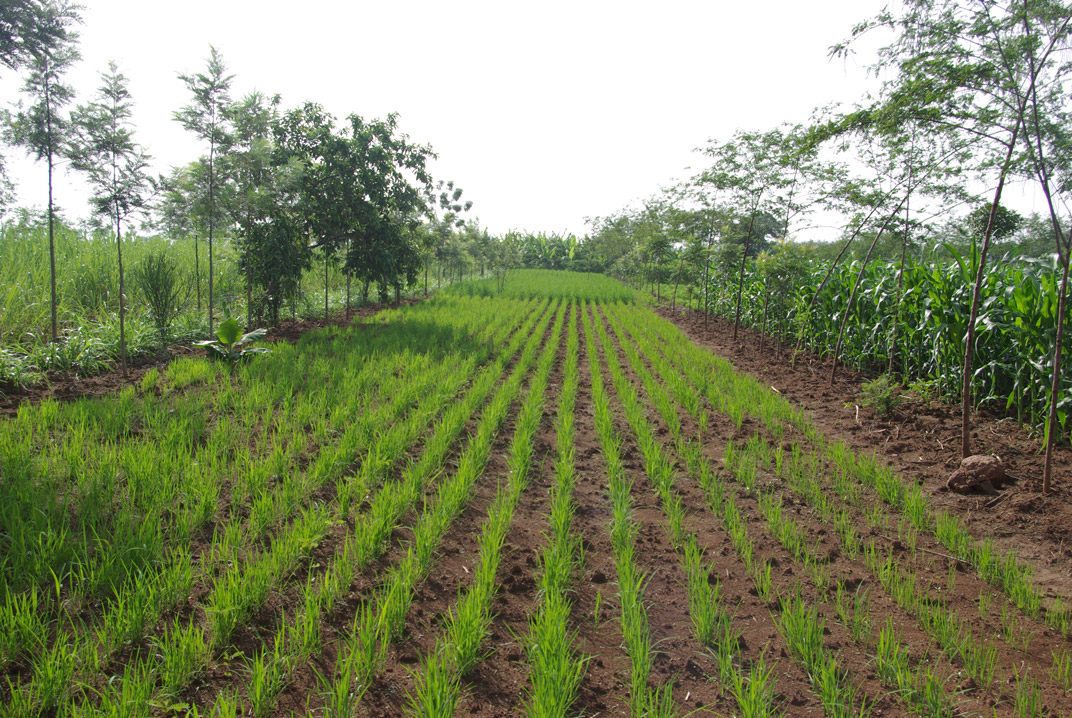
We need to tackle the amount of waste that is produced, and we also need to scale existing solutions that make waste disposal more sustainable today. Waste from landfill sites emits large amounts of greenhouse gases, in particular methane, which over 20 years is many times more potent than carbon dioxide (CO2). The purpose of the project is to capture this gas and prevent it from being released freely into the atmosphere. Once captured, gas is used as a fuel for electricity generation and hence displaces fossil fuel-based electricity. Looking to the future, the project also contributes to improving solid waste management practices through a remediation program to close landfills – and increasing recycling in Mexico. The project contributes to a range of Mexico’s sustainable development goals, specifically by:
- expanding clean and efficient technologies;
- generating clean renewable energy;
- creating employment opportunities;
- improving waste management practices and preventing environmental pollution.
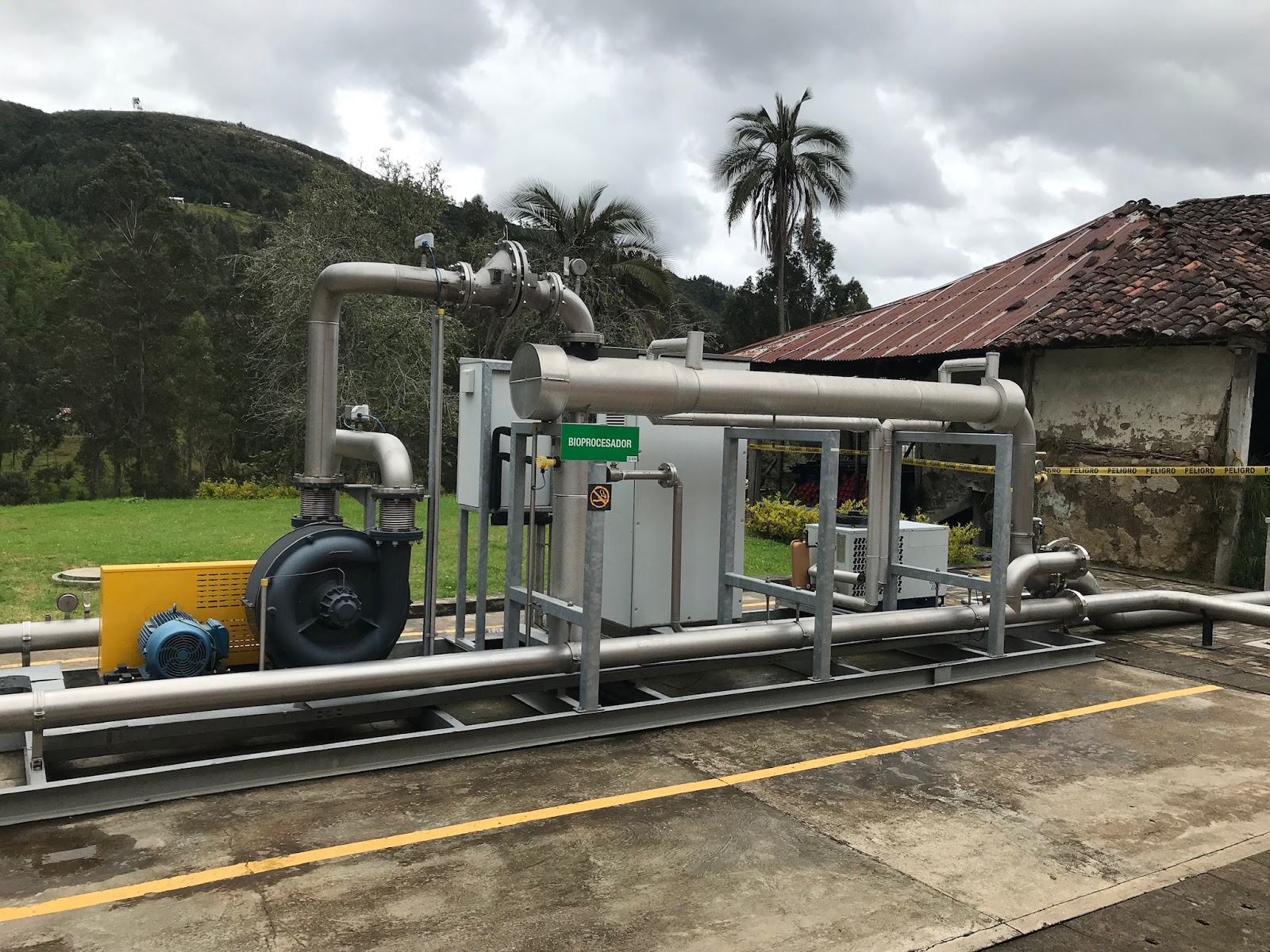
The Rio Anapu-Pacaja REDD Carbon Credit Project in Portel, Para is protecting 165,707 hectares in a highly critical region of the Brazilian Amazon. The high levels of land grabbing, land conflict and instability in the region has allowed the project to strongly focus on bringing stability to all the areas that surround the project area by paying for and helping the local residents known as Riverine people to gain land tenure documents and eventually full freehold title deeds.

Packaging emissions for 2022:
This Gold Standard certified project in the coastal region of Kenya, provides clean drinking water to small rural communities through the repair and installation of boreholes.
Using a vertical pipe casing and well screen, the boreholes can extract clean water from the ground and communities no longer have to purify water by boiling it. This project is based around Kilifi County which is on the coast, north of Mombasa. So far more than 60 boreholes have been rehabilitated, benefiting about 37,000 people. With easy access to clean water, families no longer have to collect firewood for boiling, saving time and reducing deforestation.
Without a functioning borehole, women spent an average of 2 hours 50 minutes per day collecting water, which reduced to 47 minutes per day after the borehole in the region was rehabilitated.
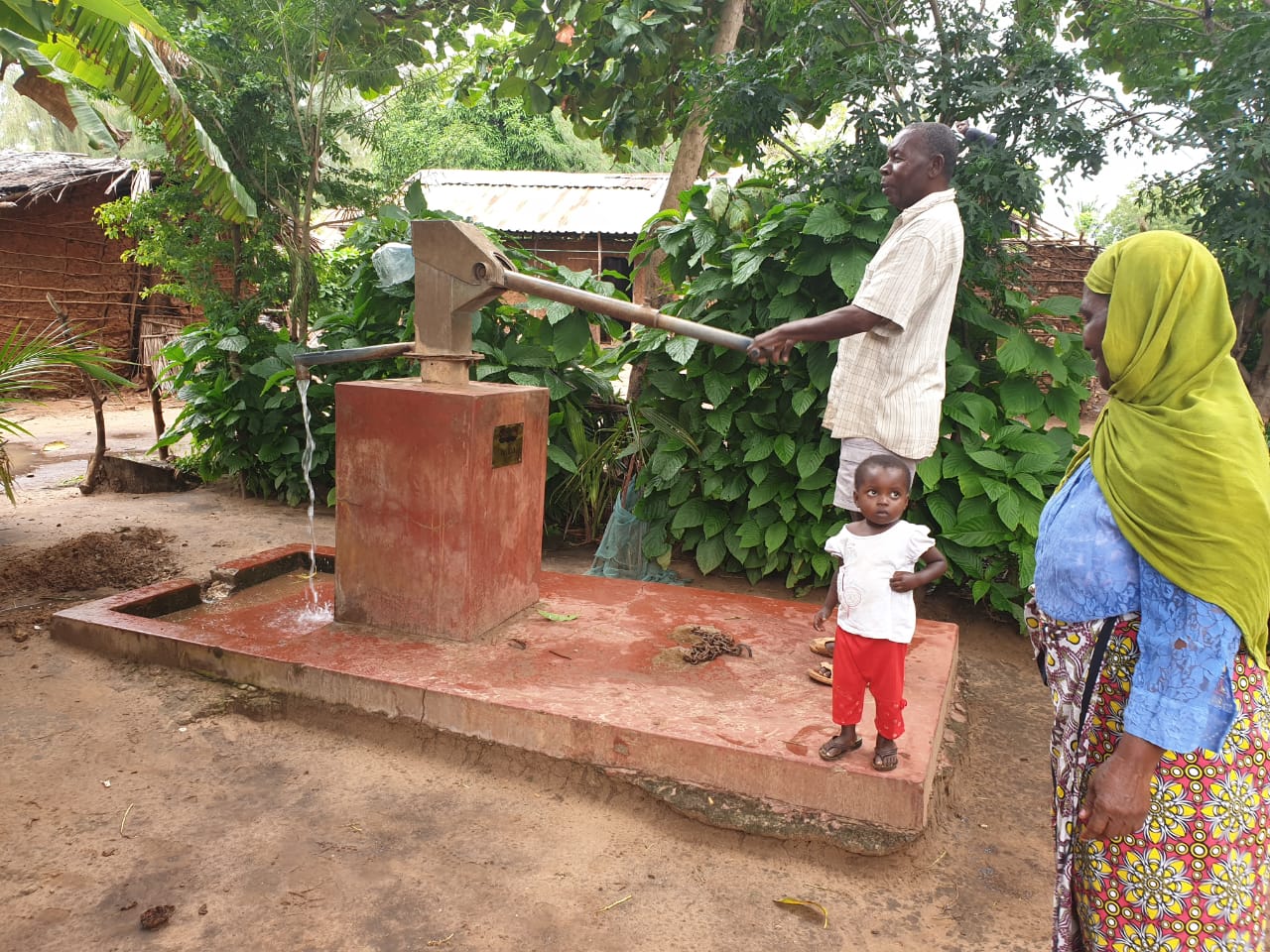
As an add-on to the water project, Elopak supports the planting of mangroves in the same region. As it takes time for trees to grow and capture carbon, these are not calculated into the actual carbon emission offsetting. Mangroves are estimated to store up to four times more carbon than rainforests, making them a highly effective natural climate solution. The project is also creating local jobs and new opportunities for the locals.
Over 80% of Kenya’s mangrove forests have disappeared. On Mtwapa Creek, near Mombasa, the mangrove forests have been destroyed to provide fuel and income for local communities. The deforestation has been so severe there is space for at least 100,000 trees. A local conservation group based in the area is raising seedlings to restore the coastal mangroves.
In order to present a new alternative to local communities, beehives are installed in the trees – providing a new income source from the sale of honey. Medicinal honey is in high demand and particularly valuable in the markets.
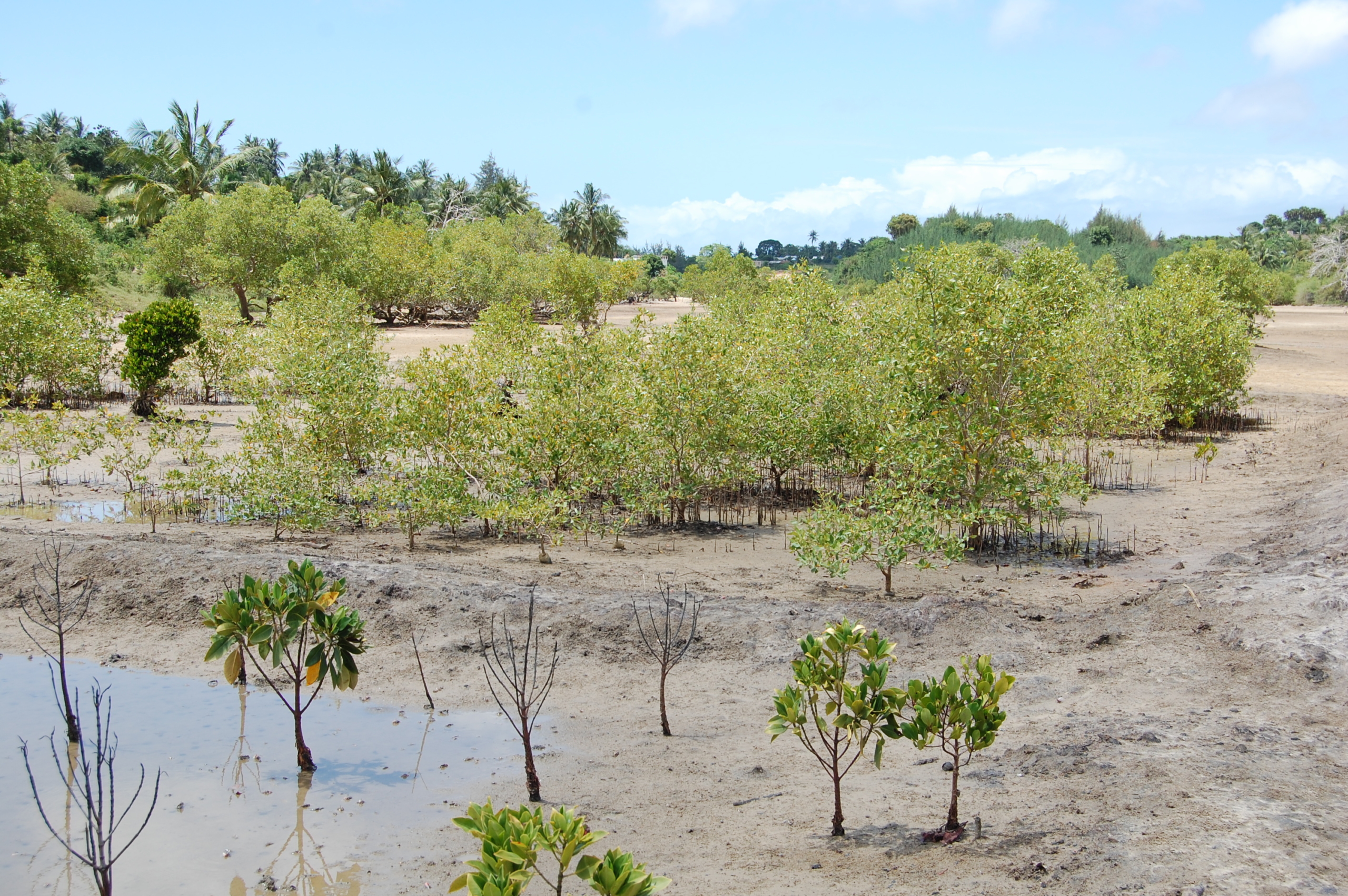
An efficient, easy-to-use stove, reduces fuel use by 50%, reducing the health impacts of indoor air pollution and saving money.
Many countries rely on biomass or charcoal for cooking, which is a root cause of poverty, poor health, gender inequality, and environmental degradation. The stove used by this project is popular for its ease of use and robust design, being durable yet portable. By reducing charcoal fuel consumption by over 50 percent compared to traditional stoves, households throughout Ghana are able to realize significant financial benefits, leaving more to spend on essential items like family health and education. Investment in the project has established a local production facility based near Accra, with over 20 local technicians and artisans trained at stove manufacturing, and a distribution network generating income for more than 200 retailers.
